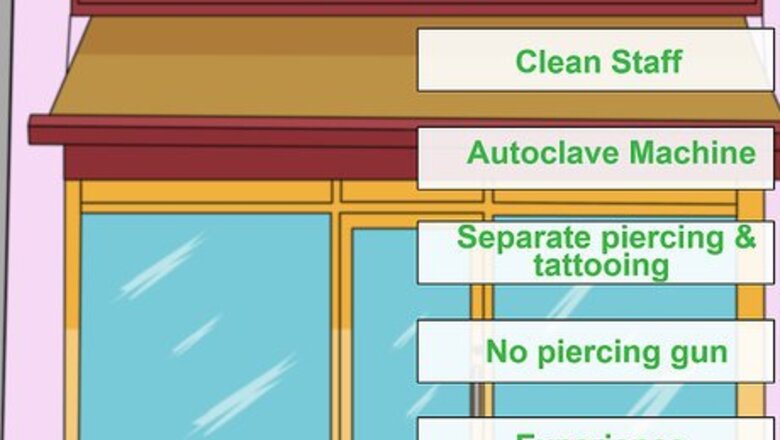
views
Caring for the Piercing while It Is Healing
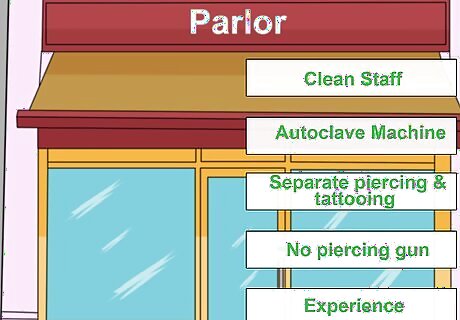
Find a reputable parlor. When looking for a good parlor, you should look for several things that indicate the parlor is a good one. You can ask for recommendations from friends, but always check out the place for yourself. It's a good idea to go in a day or two before you want your piercing to look around and ask questions. The whole studio and the people working in it should be clean. Ask if they use an autoclave (a type of cleaning unit) and if they use new needles and gloves for each person. Look to see if there is a separate area for piercing and tattooing. Check to see if they use a piercing gun. Guns are not safe, as they cannot be disinfected properly. Talk to the piercers. Ask about their experience and how long they've been piercing. Also, check whether they use hypoallergenic jewelry, made from materials such as gold (14- or 18-karat), stainless steel, titanium, or niobium.
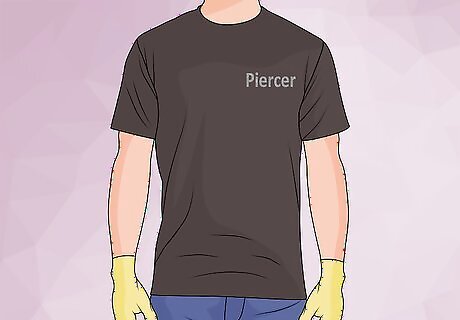
Watch the piercer. If you're at a reputable parlor, the piercer will walk you through the steps as they're cleaning items and preparing to pierce you. The piercer should wash their hands and use single-use gloves. They should show you that all instruments are either one-time use or have been through an autoclave. Also, they should clean your lip and shave the area with a one-time razor (if you need it). If you aren't comfortable with their cleanliness, walk out. Pay attention to what the piercer says. At a reputable parlor, your piercer will provide information on what you should do for aftercare. In fact, it's a requirement that piercers provide this information in many areas. Don't be afraid to speak up with questions. You have a right to ask.
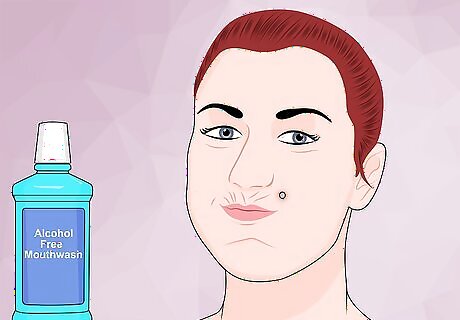
Rinse the piercing often. Oral piercings need to be rinsed regularly while they are healing. You should rinse your piercing four to five times a day, after every time you eat (particularly meals) and before you go to bed to help reduce bacteria. You can use either a salt solution or an alcohol-free mouthwash (that's both antibacterial and antimicrobial). To make the salt solution, dissolve a teaspoon of (non-iodized) salt in a cup of warm water. To rinse, just swish the mouthwash or solution around the inside of your mouth, particularly near your piercing, for fifteen to thirty seconds.
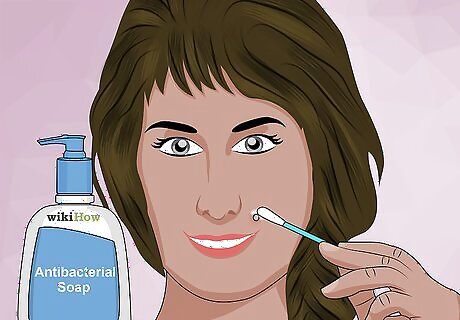
Treat the outer area at least twice a day. While you need to rinse the inner area, it's also important to pay attention to the outside, too. You can wash it off with antibacterial soap, for instance. You can also use an antibacterial spray on it once it's clean. Try using a cotton swab to apply a bit of liquid antibacterial soap to the area. You can dilute the soap a bit if that makes it easier. Rub it all around the piercing, getting it thoroughly wet. Try to rub off any dried bits. After it's wet, you can turn the piercing as needed. Rinse off the soap. Do not use hydrogen peroxide, alcohol, or antibiotic ointments, gels, or creams.
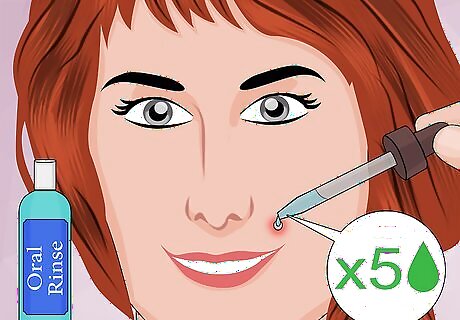
Use an oral rinse. An oral rinse helps keep the area clean. You apply five drops to each side of the piercing. Once it foams up, spit it out. Some brands you can use include Gly-oxide or Peroxyl. You can usually buy them at the piercing parlor or at a drug store. Do this routine twice a day.
Keeping the Piercing Clean
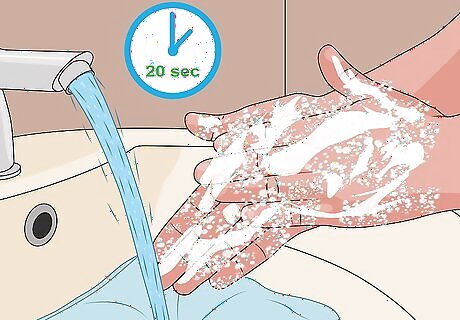
Clean your hands before touching the piercing. If you are going to clean or touch your piercing, your hands need to be as bacteria-free as possible. Wash them for a good twenty seconds, scrubbing them with soap and water. Dry on a clean towel.
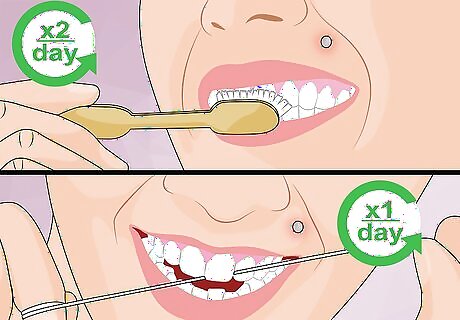
Reduce bacteria in your mouth. Taking care of your mouth and teeth while your piercing is healing is also important. Make sure you are brushing twice a day (with a soft-bristled brush) and that you are flossing once a day. Doing so will help reduce the bacteria your piercing is exposed to.
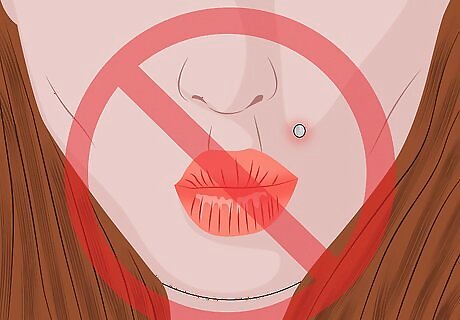
Skip the kissing. Kissing, at least French kissing, introduces new bacteria to your mouth. You should skip this type of kissing while your lip is healing. Also, avoid giving oral sex while your lip is healing, as that can also introduce bacteria.
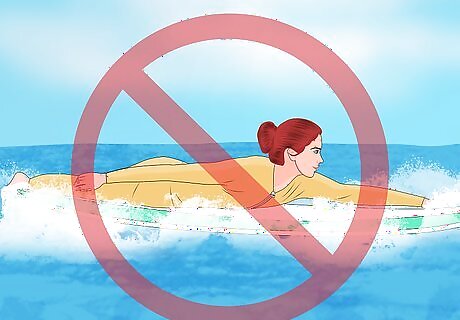
Avoid swimming. Any kind of body of water carries bacteria, even treated swimming pools. While your piercing is healing, make sure to avoid these areas. You don't want to introduce extra bacteria to the area, as that could lead to an infection.
Dealing with Problems
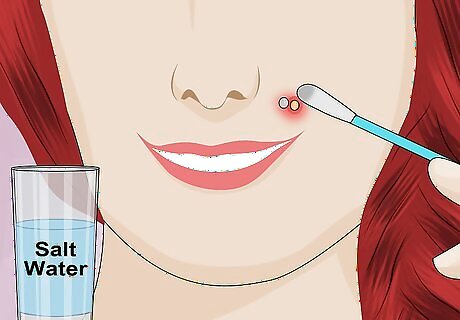
Treat a piercing pimple. Sometimes, you may get a "pimple" near or in the piercing while it is healing. Most of the time, you can treat these at home, though if it is particularly swollen or you notice signs of infection, you should see a doctor. Use a saltwater rinse on the area. Keep it up for two weeks after the pimple disappears. Antihistamines may also help.
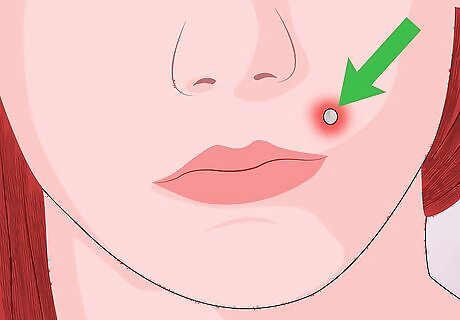
Watch for signs of infection. An infected piercing can be a serious medical issue if you just let it go. Watch for signs of infection, which include swelling, redness, and pain. Red streaks going out away from the piercing are particularly problematic, as that means the infection is spreading quickly. Also, watch for thick discharge, especially if you see a lot of it. It will likely smell bad. If your infection worsens, you may get a fever, sweating, and/or chills. You may also get nauseated, vomit, or become disoriented.
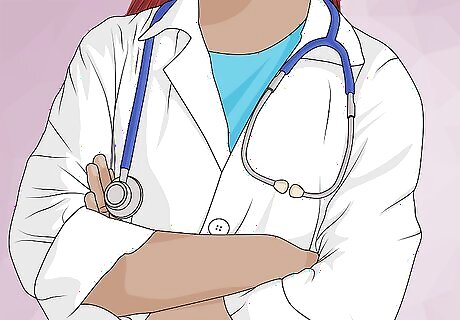
See a doctor. If you notice signs of infection, you should go to the doctor. A doctor will help you treat the issue. Plus, you may need prescription antibiotics to stave off the infection. Also, don't immediately take out your piercing if you suspect an infection. You may need to leave it in to help drain the infection.




















Comments
0 comment